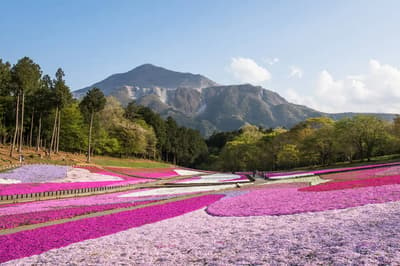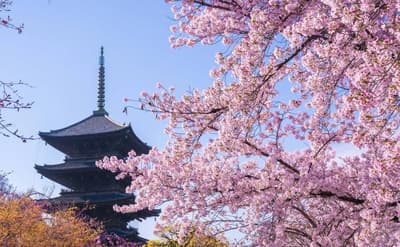Kyoto attracts tourists from both Japan and abroad. Especially in spring and fall, when the cherry blossoms and autumn leaves are in full bloom, the city can be overflowing with tourists. Although Kyoto has the image of being crowded no matter where you go, there are many Hidden Gems.
In this article, we introduce 16 little-known, hole-in-the-wall spots in Kyoto! We recommend these spots for those who want to avoid the crowds and for those who want to know about non-standard sightseeing spots.
To learn more about Kyoto, click here.
Funaya in Ine Town(伊根町の舟屋)

Ine Town, located on the Tango Peninsula in Kyoto, is a popular area for its “Funaya,” old houses that look like they are floating on the sea. About 230 Funaya stand side by side along Ine Bay, forming a village. In Ine Town, there are sightseeing boats and venue cabs that allow visitors to see the Funaya from the sea, and to enjoy strolling along the streets. In a town so close to the sea, you will be able to feel the cool air.
Please note that people actually live in the Funaya, so be careful not to enter the buildings.
Miyama’s thatched village (Kayabuki no Sato)(かやぶきの里)
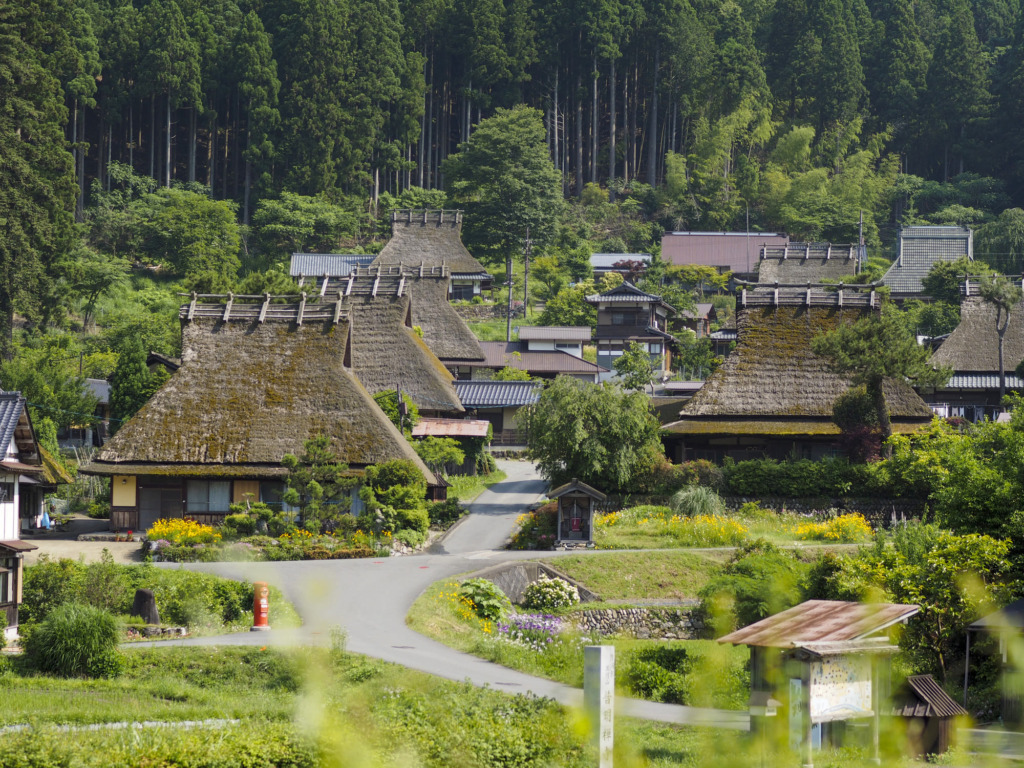
This is one of the most popular tourist spots in Miyama-cho. It is a popular spot for visitors to encounter the original landscape of Japan, with many private houses with thatched roofs still in existence.
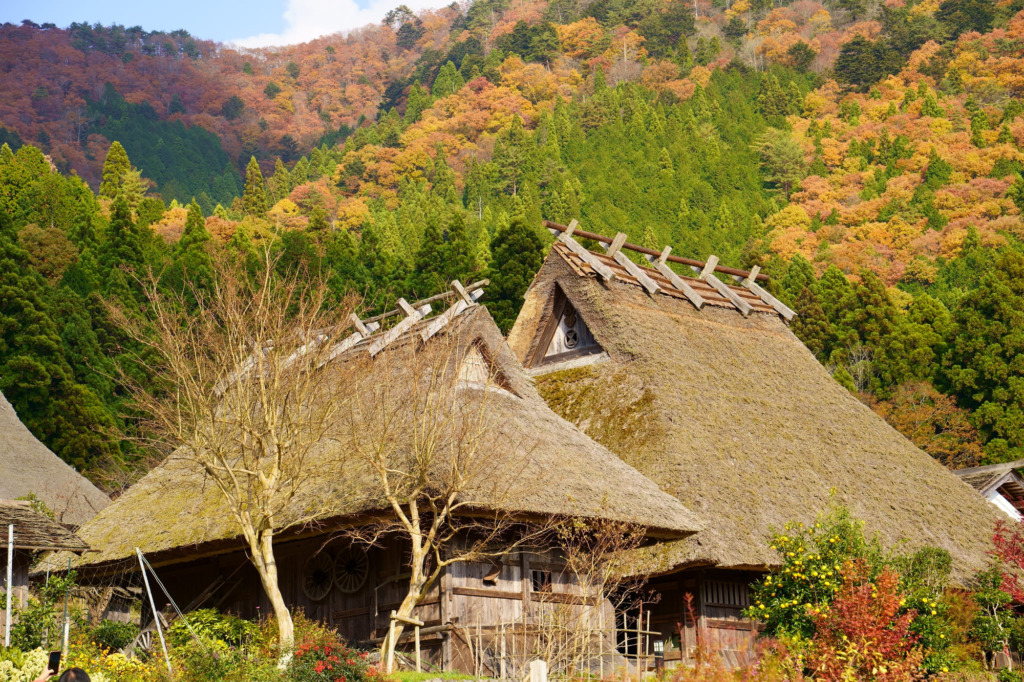
A thatched roof is a roof made of awn or straw. Although it is a primitive roof construction, it is characterized by its durability, heat retention, and functionality. However, because of its vulnerability to fire, it is now prohibited to build a new house with a thatched roof.


There is also a café, a museum, and a guest house in the village of Kayabuki-no-Sato. Also, a local guide will take you around the village with commentary during the “Thatched Village Guided Walk,” which can be reserved in advance. For details and reservations, please visit the website below.
Also, please visit Kayabuki-no-Sato’s Instagram for information on what is going on in the village and the opening hours of each facility.
Private guided tour of Kayabuki-no-Sato (English): https: //miyamanavi.com/en/activity/detail/englishguidedwalk.html
Official Instagram of Kayabuki-no-Sato: https://www.instagram.com/kayabukinosato_kaisha/
Asahi Group Oyamazaki Villa Museum of Art(アサヒグループ大山崎山荘美術館)

The museum consists of the main building, an English-style mountain villa, the Chichu-kan “Underground Jewelry Box annex” and the Yamate-kan “Dream Box annex” designed by architect Tadao Ando. Six buildings including the main building were registered as Tangible Cultural Properties of Japan in 2004.
The spacious garden and colorful stained glass windows are just a few of the many attractions on the grounds. On the second floor of the main building, there is a tee room with a terrace that offers a spectacular view of the mountains from southern Kyoto to Nara.
Gekkeikan Okura Sake Museum (月桂冠大倉記念館)
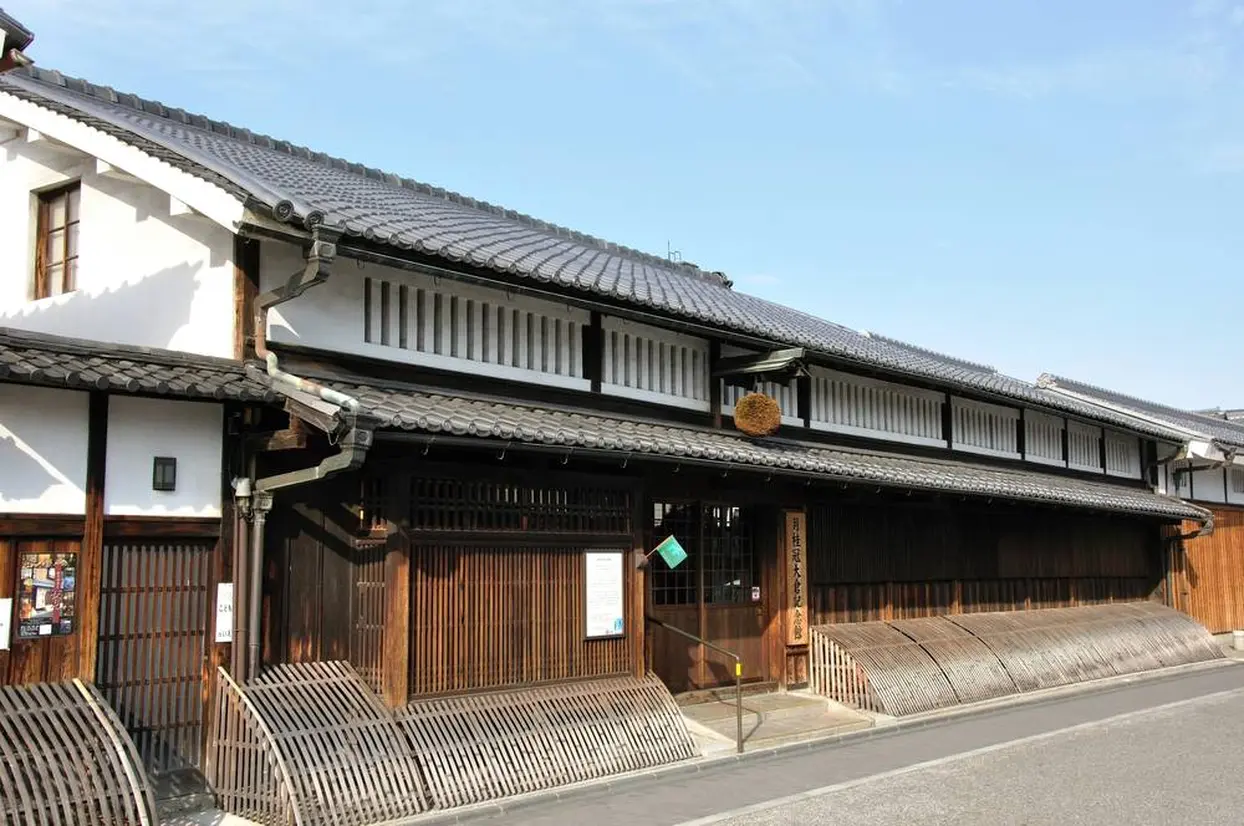
Gekkeikan is a popular sake brewer that has developed in Fushimi. The Gekkeikan Okura Sake Museum is a place where visitors can learn about the history of Gekkeikan and its sake brewing techniques.
In addition to introducing the history of sake brewing and sake in an easy-to-understand manner, visitors can see exhibits of tools used in sake brewing, tour historic buildings, and even compare various types of sake. Visitors can also learn about the history and brewing of sake and enjoy sake tasting. This is a must-see spot for anyone interested in sake.
Jujukoku-bune/ Sanjukoku-bune (十石舟 / 三十石舟)
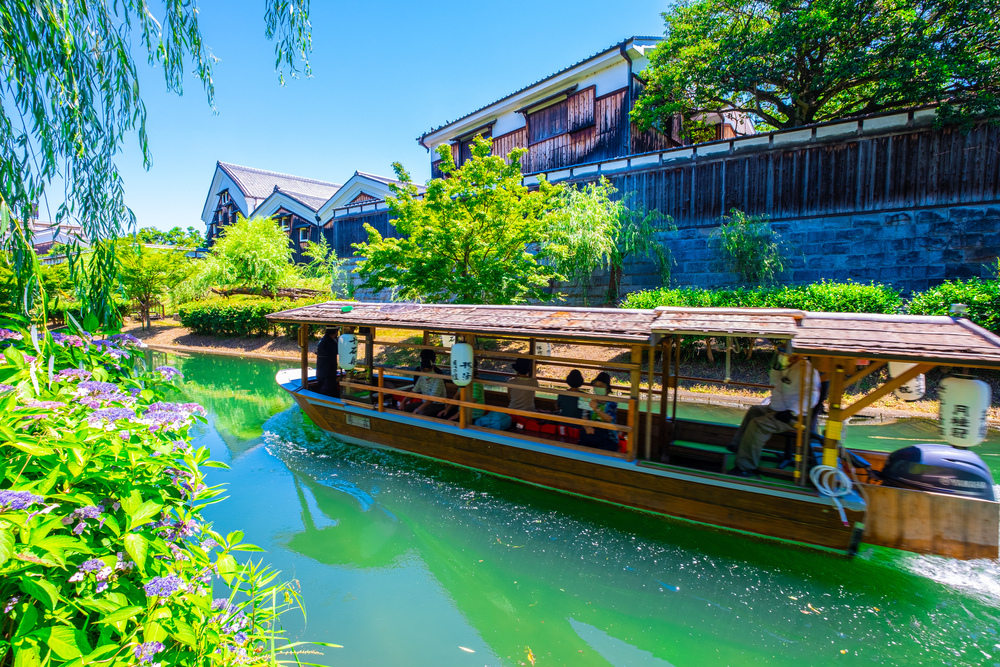
The cityscape of Fushimi can be enjoyed from the river. The canal, which was used for transportation during the Edo period (1603-1868), is now used for sightseeing boats to enjoy the scenery of Fushimi. You can enjoy the seasonal scenery of cherry blossoms in spring, hydrangea and willow trees in summer, and autumn leaves in fall, while taking the time to experience Fushimi as it used to be a port town. Please note that the bus is closed in winter.
Myoshinji Temple(妙心寺)

Myoshinji Temple, a 5-minute walk from Hanazono Station, is a temple with very large grounds. The temple is about 100,000 tsubo (about 1,000,000 square meters) in area, about the size of seven Tokyo Domes!
A must-see at Myoshinji Temple is the “Unryu-zu” in the Dharma Hall. A powerful dragon with a glaring expression is painted on the ceiling. It was painted over a period of eight years by Kano Tanyu, a genius painter of the Edo period, and has been preserved as it was in its original state.
Shin Puh Kan(新風館)

A complex facility opening in 2020 with an impressive retro brick structure directly connected to Karasuma-Oike Station. The building, which was originally the former Kyoto Central Telephone Office, was constructed as a “new building” under the supervision of architect Kengo Kuma, and part of the building remains as a “preserved building”.

Inside the building are about 20 stores you won’t find anywhere else, including a movie theater, apparel goods, cafes, and restaurants. Another unique feature of the Shin Puh Kan is that it is also home to the Ace Hotel Kyoto, the first hotel to open in Asia. While being a progressive and fashionable complex, the greenery of the courtyard and the Japanese atmosphere make it a very comfortable spot.
Genkoan Temple (源光庵)

The official name of the temple is Yohozan Hojurin Genko-an. The temple offers atmospheric views throughout the four seasons, but it is especially popular during the autumn foliage season.
The symbol of Genkoan Temple is the circular window in the main hall. This is called the “Window of Realization (Satori no mado),” and the circular shape represents the spirit of Zen (to discipline oneself, appreciate all things, and reconsider one’s way of life).
The view through the window changes with the changing of the seasons. It is lush green in the fresh green season, fiery red in the fall, and white in the winter when it is covered with snow.
Official website: https://genkouan.or.jp/en/
Okazaki Shrine (岡崎神社)

Located near Heian-jingu Shrine, Okazaki Shrine is one of the shrines built to protect Heian-kyo. In recent years, the shrine has become the talk of the town as a rabbit-filled shrine. The shrine grounds are filled with rabbits anyway! The lanterns in the shrine are painted with rabbits, the stone statues in the shrine are also rabbits…you will encounter a lot of rabbits anyway.

The “Usagi-mikuji” (rabbit omikuji) is a representative of the cute rabbits of Okazaki Shrine. The ceramic rabbit contains a omikuji, and you can take the rabbit home along with the omikuji. The round shape of the rabbit is very cute and makes a perfect memento of your trip!
Incidentally, Okazaki Shrine is named after a rabbit known for its fertility, and is believed to bring blessings for child bearing, safe childbirth, matchmaking, and warding off bad luck.
Chazuna(茶づな)

Chazuna is a facility where visitors can learn about the history of Uji and the city. In addition to a park with lush greenery and a restaurant, Chazuna also operates experience programs related to tea, a specialty of Uji. There are a variety of experiences planned, but one of the great points is that you can actually pick tea!
Manpukuji Temple(萬福寺)
This Chinese-style temple was founded by Chinese monks who came to Japan. The architecture also incorporates the Chinese Ming Dynasty style, a design not seen in Japanese temples.
Although reservations are required, it is possible to eat “fucha ryori” (Buddhist cuisine) at Manpukuji Temple. This is a rare temple where visitors can experience Chinese culture and food while in Japan.
Official website: https://www.obakusan.or.jp/en/
GEAR(ギア)

This is a new, wordless stage that can be enjoyed by young children and foreign audiences. The story, set in an old toy factory, proceeds entirely without dialogue.
The absence of words is replaced by the use of light, images, dance, juggling, and other performances that deliver emotion and excitement to the audience. The facial expressions and gestures of the performers on the realistic stage set are also a must-see. Tickets can be purchased on the official website, so if you are interested, please check it out.
Official website: https://www.gear.ac/en/
Jakko-in Temple (寂光院)

Jakko-in Temple, with its beautiful stone-step approach, is the temple that appears in the historically famous Japanese tale “The Tale of the Heike”. It is also said to be the birthplace of Ohara’s famous product “Shibazuke”.
Japanese Oni Exchange Museum (日本の鬼の交流博物館)

This museum in Fukuchiyama City is symbolized by a giant demon tile. There are exhibits on demons from Japan and around the world, and a variety of masks of demons with different faces are displayed. Interestingly, demons have their own personalities, and their faces are completely different from country to country!

There are various demon artworks and objects in the museum, so please try to find your favorite demon.
The Kyoto Arashiyama Orgel Museum(京都嵐山オルゴール博物館)

A museum exhibiting music boxes from around the world. The museum exhibits European music boxes from the 19th century, when music box culture flourished, as well as automatic musical instruments and karakuri dolls from around the world.
There is also a music box store, with a wide range of music boxes, including some that can be displayed as interior decorations and some of the finest in the world.
Saihoji Temple (西芳寺)
The temple is also known as “Koke-dera” (moss temple) because its precincts are covered with about 120 varieties of moss. The lush green carpet is beautiful and the mysterious scenery is registered as a cultural heritage. The best time to visit such a moss temple is around June, when the rains continue. It is said that moss looks more beautiful the morning after it rains.
Advance registration is required to visit the temple. You can also make reservations online, please check the official website.
Official website: https://saihoji-kokedera.com/en/

